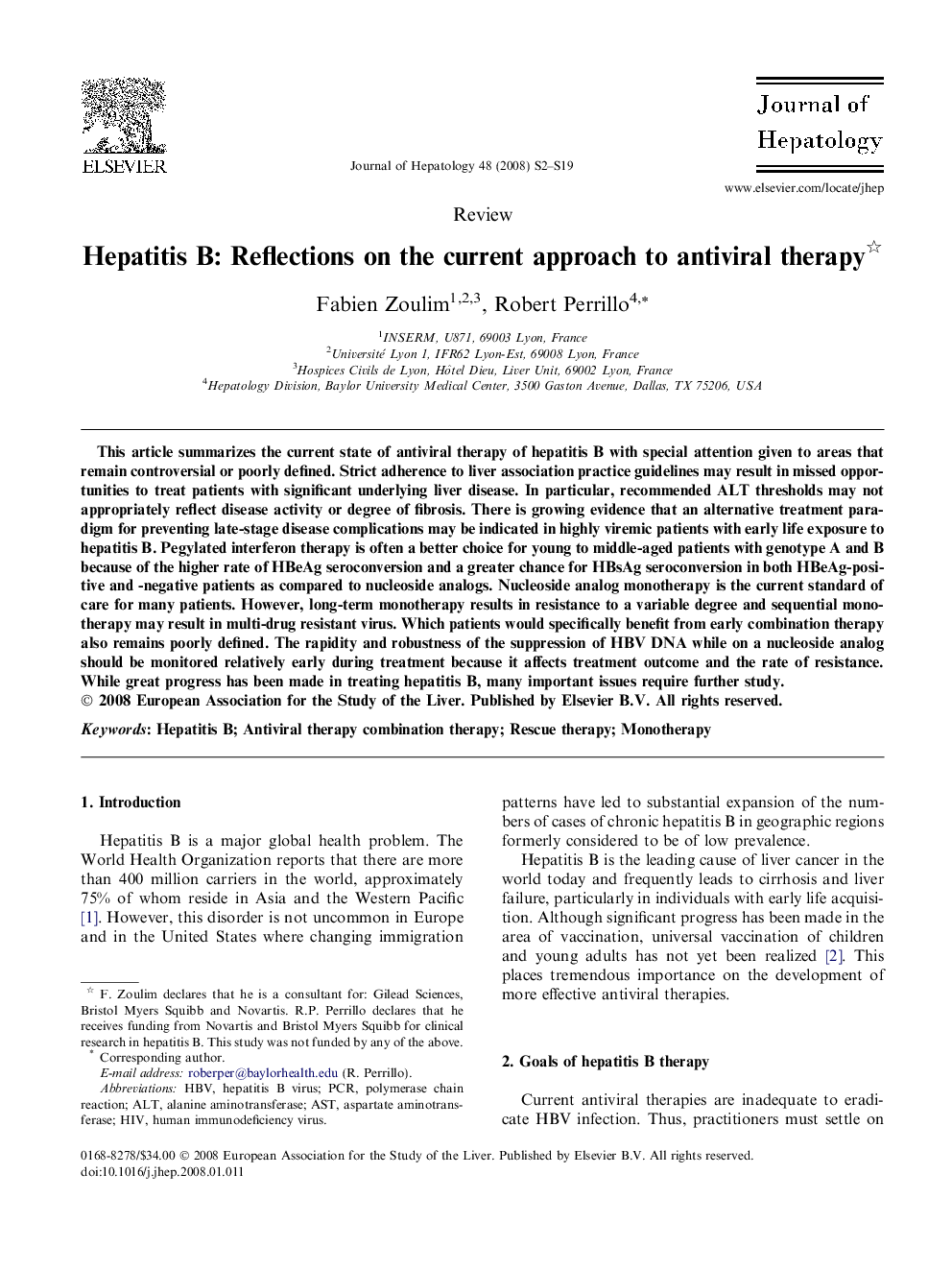| Article ID | Journal | Published Year | Pages | File Type |
|---|---|---|---|---|
| 6108786 | Journal of Hepatology | 2008 | 18 Pages |
This article summarizes the current state of antiviral therapy of hepatitis B with special attention given to areas that remain controversial or poorly defined. Strict adherence to liver association practice guidelines may result in missed opportunities to treat patients with significant underlying liver disease. In particular, recommended ALT thresholds may not appropriately reflect disease activity or degree of fibrosis. There is growing evidence that an alternative treatment paradigm for preventing late-stage disease complications may be indicated in highly viremic patients with early life exposure to hepatitis B. Pegylated interferon therapy is often a better choice for young to middle-aged patients with genotype A and B because of the higher rate of HBeAg seroconversion and a greater chance for HBsAg seroconversion in both HBeAg-positive and -negative patients as compared to nucleoside analogs. Nucleoside analog monotherapy is the current standard of care for many patients. However, long-term monotherapy results in resistance to a variable degree and sequential monotherapy may result in multi-drug resistant virus. Which patients would specifically benefit from early combination therapy also remains poorly defined. The rapidity and robustness of the suppression of HBV DNA while on a nucleoside analog should be monitored relatively early during treatment because it affects treatment outcome and the rate of resistance. While great progress has been made in treating hepatitis B, many important issues require further study.
